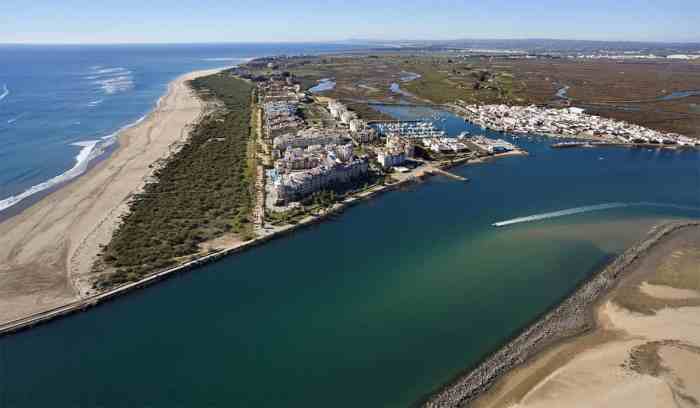Welcome to the ultimate guide to Spain’s most budget-friendly destinations. Whether you’re seeking affordable living or an unforgettable vacation without breaking the bank, this comprehensive overview of the cheapest cities in Spain will steer you towards the perfect destination.
From bustling metropolises to charming coastal towns, Spain offers a diverse range of cities where affordability meets vibrant culture. Dive into the heart of these hidden gems and discover the secrets of living well for less.
Overview of Affordable Cities in Spain: Cheapest Cities In Spain
Spain is renowned for its vibrant culture, stunning architecture, and delicious cuisine. However, it is also known for being a relatively affordable country to live in. Several cities in Spain offer a high quality of life at a fraction of the cost of major European cities.
According to the 2023 Cost of Living Index by Numbeo, Valencia, Alicante, and Seville rank among the top 10 most affordable cities in Western Europe. These cities offer low living costs, affordable housing, and efficient transportation systems, making them attractive destinations for both locals and expats.
Living Costs
The cost of living in affordable Spanish cities is significantly lower than in other European countries. For example, in Valencia, a one-bedroom apartment in the city center costs around €500 per month, while in Madrid, the same apartment would cost around €1,000 per month.
Groceries, utilities, and transportation are also relatively inexpensive in affordable Spanish cities. A meal at a mid-range restaurant costs around €10-15, while a monthly public transportation pass costs around €50.
Housing Prices
Housing prices in affordable Spanish cities are also quite reasonable. In Valencia, the average price per square meter is around €2,000, while in Madrid, it is around €3,500 per square meter.
This makes it possible for many people to afford to buy a home in these cities, even on a modest income.
Transportation
Transportation in affordable Spanish cities is efficient and affordable. Public transportation systems are well-developed, with buses, trains, and metros connecting all major areas of the city.
Taxis are also relatively inexpensive, with fares starting at around €5. Additionally, many cities offer bike-sharing programs, making it easy to get around without a car.
Cost of Living Comparison

When comparing the cost of living in different Spanish cities, several factors come into play, including rent, groceries, utilities, and entertainment expenses. To provide a comprehensive overview, we have compiled a table that compares these costs across various cities.
The table is designed to be responsive, ensuring it is easily accessible and readable on all devices. Each category is clearly labeled, and the data is presented in a clear and concise manner.
Rent
Rent is a significant expense in any city, and Spain is no exception. The cost of rent can vary widely depending on the city and the type of accommodation you choose. In general, larger cities like Madrid and Barcelona have higher rent prices compared to smaller cities like Valencia or Seville.
According to our data, the average rent for a one-bedroom apartment in Madrid is around €800 per month, while in Barcelona it is around €700 per month. In Valencia, the average rent for a one-bedroom apartment is around €500 per month, and in Seville it is around €450 per month.
Groceries
Groceries are another essential expense that can vary depending on the city you live in. In general, larger cities tend to have higher grocery prices compared to smaller cities. This is due to the higher cost of transportation and distribution in larger cities.
Our data shows that the average cost of groceries for a family of four in Madrid is around €400 per month, while in Barcelona it is around €350 per month. In Valencia, the average cost of groceries for a family of four is around €300 per month, and in Seville it is around €250 per month.
Utilities
Utilities, such as electricity, gas, and water, are also an important expense to consider when comparing the cost of living in different cities. The cost of utilities can vary depending on the size of your home, your usage habits, and the city you live in.
According to our data, the average cost of utilities for a two-bedroom apartment in Madrid is around €150 per month, while in Barcelona it is around €120 per month. In Valencia, the average cost of utilities for a two-bedroom apartment is around €100 per month, and in Seville it is around €90 per month.
Entertainment
Entertainment expenses can also vary depending on the city you live in. Larger cities typically offer a wider range of entertainment options, which can come at a higher cost. Smaller cities may have fewer entertainment options, but they may also be more affordable.
Our data shows that the average cost of entertainment for a single person in Madrid is around €200 per month, while in Barcelona it is around €150 per month. In Valencia, the average cost of entertainment for a single person is around €100 per month, and in Seville it is around €80 per month.
Affordable Housing Options
Affordable housing options in Spain can be found in various neighborhoods and areas within each city. These areas typically offer lower rental rates and purchase prices compared to more popular or central districts. The types of housing available in these neighborhoods include apartments, houses, and shared accommodations.
Neighborhoods with Affordable Housing
Barcelona
-
-*Poblenou
An up-and-coming neighborhood with a mix of industrial and residential areas, offering affordable apartments and shared accommodations.
-*Sant Andreu
A residential neighborhood located in the northeast of Barcelona, known for its affordable housing options and proximity to public transportation.
-*Horta-Guinardó
A quiet and residential neighborhood in the hills of Barcelona, with affordable apartments and houses available.
Madrid
-
-*Vallecas
A working-class neighborhood located in the southeast of Madrid, offering a range of affordable housing options, including apartments and houses.
-*Usera
A multicultural neighborhood in the south of Madrid, known for its affordable rental rates and shared accommodations.
-*Carabanchel
A residential neighborhood located in the southwest of Madrid, with a mix of affordable apartments and houses available.
Valencia
-
-*Russafa
A bohemian and trendy neighborhood in the center of Valencia, offering affordable apartments and shared accommodations.
-*El Cabanyal
A traditional fishing district located near the beach, with affordable housing options, including apartments and houses.
-*Benimaclet
A university neighborhood located in the northeast of Valencia, known for its affordable rental rates and shared accommodations.
Average Rental Rates and Purchase Prices
Rental rates and purchase prices for affordable housing in these neighborhoods vary depending on the size, location, and amenities offered. However, on average, rental rates for a one-bedroom apartment in an affordable neighborhood range from €500 to €700 per month.
Purchase prices for a two-bedroom apartment can range from €150,000 to €250,000.It’s important to note that housing availability and prices can fluctuate, so it’s recommended to conduct thorough research and consult with local real estate agents for the most up-to-date information.
Transportation Costs

Affordable cities in Spain generally offer convenient and budget-friendly transportation options, making it easy to get around without breaking the bank.
Public transportation systems, including buses, trains, and metros, are widely available and offer affordable fares. Many cities also have extensive bike-sharing programs and ride-sharing services, providing additional convenient and cost-effective ways to travel.
Public Transportation
Public transportation is a great way to save money on transportation costs in Spain. Buses, trains, and metros are all widely available in affordable cities, and fares are typically very reasonable.
- Buses:Buses are the most common form of public transportation in Spain. They are generally inexpensive and run frequently, making them a convenient option for getting around.
- Trains:Trains are a good option for longer distances. They are typically more expensive than buses, but they are also faster and more comfortable.
- Metros:Metros are underground trains that are found in larger cities. They are a quick and efficient way to get around, and fares are usually very affordable.
Ride-Sharing Services, Cheapest cities in spain
Ride-sharing services, such as Uber and Lyft, are another popular option for getting around in Spain. They are typically more expensive than public transportation, but they are also more convenient and can be a good option for late-night travel or for getting to places that are not well-served by public transportation.
Bike-Sharing Programs
Many affordable cities in Spain have extensive bike-sharing programs. These programs allow you to rent a bike for a short period of time, and they are a great way to get around the city cheaply and easily.
Grocery Shopping
Exploring the affordable grocery options in Spain’s budget-friendly cities can significantly reduce your cost of living. Several stores and markets offer competitive prices, allowing you to save money on essential food items.
To further reduce expenses, consider purchasing groceries in bulk when possible. This strategy is particularly beneficial for non-perishable items such as canned goods, rice, and pasta. Additionally, taking advantage of coupons and discounts offered by stores can help you save even more.
Local Produce and Specialty Items
Spain is renowned for its fresh produce and diverse culinary traditions. When shopping for groceries, be sure to visit local markets to find seasonal fruits and vegetables at affordable prices. These markets also offer a wide selection of specialty items, such as cured meats, cheeses, and olives, that are unique to the region.
Entertainment and Leisure
Spain offers an array of affordable entertainment and leisure activities, catering to diverse tastes and budgets. From free museums and parks to cultural events and local festivals, there’s something for everyone to enjoy without breaking the bank.
Many cities offer discounts or promotions for students, seniors, and low-income individuals, making it even easier to access cultural experiences. Additionally, local festivals and community activities provide opportunities to connect with the vibrant Spanish culture and traditions.
Free Museums and Parks
- Madrid:Prado Museum, Reina Sofía Museum, Retiro Park
- Barcelona:Picasso Museum, Park Güell, Ciutadella Park
- Valencia:IVAM (Valencian Institute of Modern Art), Turia Gardens
- Seville:Museum of Fine Arts, María Luisa Park
- Granada:Alhambra Palace, Generalife Gardens
Cultural Events
- Flamenco shows:Seville, Granada
- Classical music concerts:Barcelona, Madrid
- Film festivals:San Sebastián, Valladolid
- Art exhibitions:Madrid, Valencia
- Literary events:Barcelona, Madrid
Local Festivals
- La Tomatina (Buñol):A tomato-throwing festival
- Fallas (Valencia):A festival with elaborate papier-mâché sculptures
- Semana Santa (Seville):A religious festival with processions and flamenco performances
- San Fermín (Pamplona):A festival known for its running of the bulls
- Gijón International Film Festival:A prestigious film festival showcasing independent cinema
Healthcare and Education
Spain offers a comprehensive healthcare system that is accessible to all residents. Public healthcare is available to all citizens and legal residents, and it covers a wide range of services, including doctor’s visits, hospital stays, and prescription medications. Private healthcare is also available, and it offers a wider range of services and shorter waiting times.
The cost of healthcare in Spain is relatively affordable, with public healthcare being heavily subsidized by the government.
Spain also has a well-developed education system that is free for all children up to the age of 16. There are both public and private schools available, and the quality of education is generally high. Tuition fees at private schools can vary widely, but they are typically lower than in other European countries.
Scholarships are available to help students from low-income families afford the cost of private education.
Public Healthcare
- Public healthcare is available to all citizens and legal residents of Spain.
- Public healthcare is heavily subsidized by the government, making it very affordable.
- Public healthcare covers a wide range of services, including doctor’s visits, hospital stays, and prescription medications.
- Waiting times for public healthcare can be long, especially for non-urgent care.
Private Healthcare
- Private healthcare is available to all residents of Spain.
- Private healthcare offers a wider range of services than public healthcare, including shorter waiting times and access to more specialized care.
- The cost of private healthcare can vary widely, depending on the provider and the type of coverage.
- Some private health insurance plans cover public healthcare costs, while others do not.
Education
- Education is free for all children up to the age of 16 in Spain.
- There are both public and private schools available.
- The quality of education in Spain is generally high.
- Tuition fees at private schools can vary widely, but they are typically lower than in other European countries.
- Scholarships are available to help students from low-income families afford the cost of private education.
Job Market and Economy
Spain’s economy is diverse, with significant regional variations. The job market in the cheapest cities tends to be less competitive, with lower unemployment rates and a higher demand for workers in certain sectors.
Industries that offer good employment opportunities in these cities include tourism, hospitality, retail, and healthcare. The average salaries in these cities are typically lower than in larger metropolitan areas, but the cost of living is also significantly lower, resulting in a higher disposable income.
Unemployment Rates
The unemployment rates in the cheapest cities in Spain are generally lower than the national average. For example, in Castellón, the unemployment rate is around 12%, while in Cáceres, it is around 10%. These rates are significantly lower than the national average of 13.8%.
Lifestyle and Culture
The cities of Spain offer a diverse range of lifestyles and cultures, each with its unique charm. From the vibrant nightlife of Madrid to the relaxed coastal atmosphere of Valencia, there’s something for everyone.
Local Cuisine
Spanish cuisine is renowned worldwide for its delicious and diverse flavors. Each region has its specialties, but some of the most popular dishes include paella, tapas, gazpacho, and tortilla española. Eating out in Spain is relatively affordable, with many restaurants offering set menus (menús del día) that provide great value for money.
Traditions and Social Activities
Spanish culture is rich in traditions and social activities. One of the most important traditions is the siesta, a midday nap that is still widely practiced in many parts of the country. Other popular traditions include bullfighting, flamenco dancing, and the running of the bulls in Pamplona.
While exploring the cheapest cities in Spain, consider venturing beyond its borders to experience once-in-a-lifetime adventures in Los Angeles. Discover iconic landmarks , immerse yourself in Hollywood’s glamour, and bask in the Californian sunshine. Upon your return to Spain, continue your budget-friendly exploration, uncovering hidden gems and charming towns that offer an authentic Spanish experience.
Spaniards are also known for their love of socializing, and there are always plenty of opportunities to meet new people and make friends.
Tips for Experiencing the Local Culture on a Budget
* Visit local markets and try the street food.
- Attend free cultural events, such as concerts and exhibitions.
- Take advantage of the many free walking tours that are available in most cities.
- Learn a few basic Spanish phrases.
- Be open to new experiences and don’t be afraid to get involved in local activities.
Closure
As you embark on your journey through Spain’s cheapest cities, remember that affordability is just one facet of their allure. Embrace the unique character of each destination, immerse yourself in the local culture, and create memories that will last a lifetime.
Whether you’re a budget-conscious traveler or a savvy expat seeking a new home, Spain’s hidden gems await your exploration.
Key Questions Answered
What are the cheapest cities to live in Spain?
Some of the cheapest cities to live in Spain include: Alicante, Murcia, Granada, Valladolid, and Zaragoza.
What are the factors that make these cities affordable?
These cities offer a lower cost of living due to factors such as lower housing prices, cheaper transportation, and affordable groceries.
Is it possible to find affordable housing in these cities?
Yes, there are various affordable housing options available in these cities, including apartments, houses, and shared accommodations.
How can I save money on transportation in these cities?
Taking advantage of public transportation, using ride-sharing services, and exploring bike-sharing programs are excellent ways to save money on transportation.
What are some tips for saving money on groceries?
Buying in bulk, using coupons, and visiting local markets are effective ways to reduce grocery expenses.



